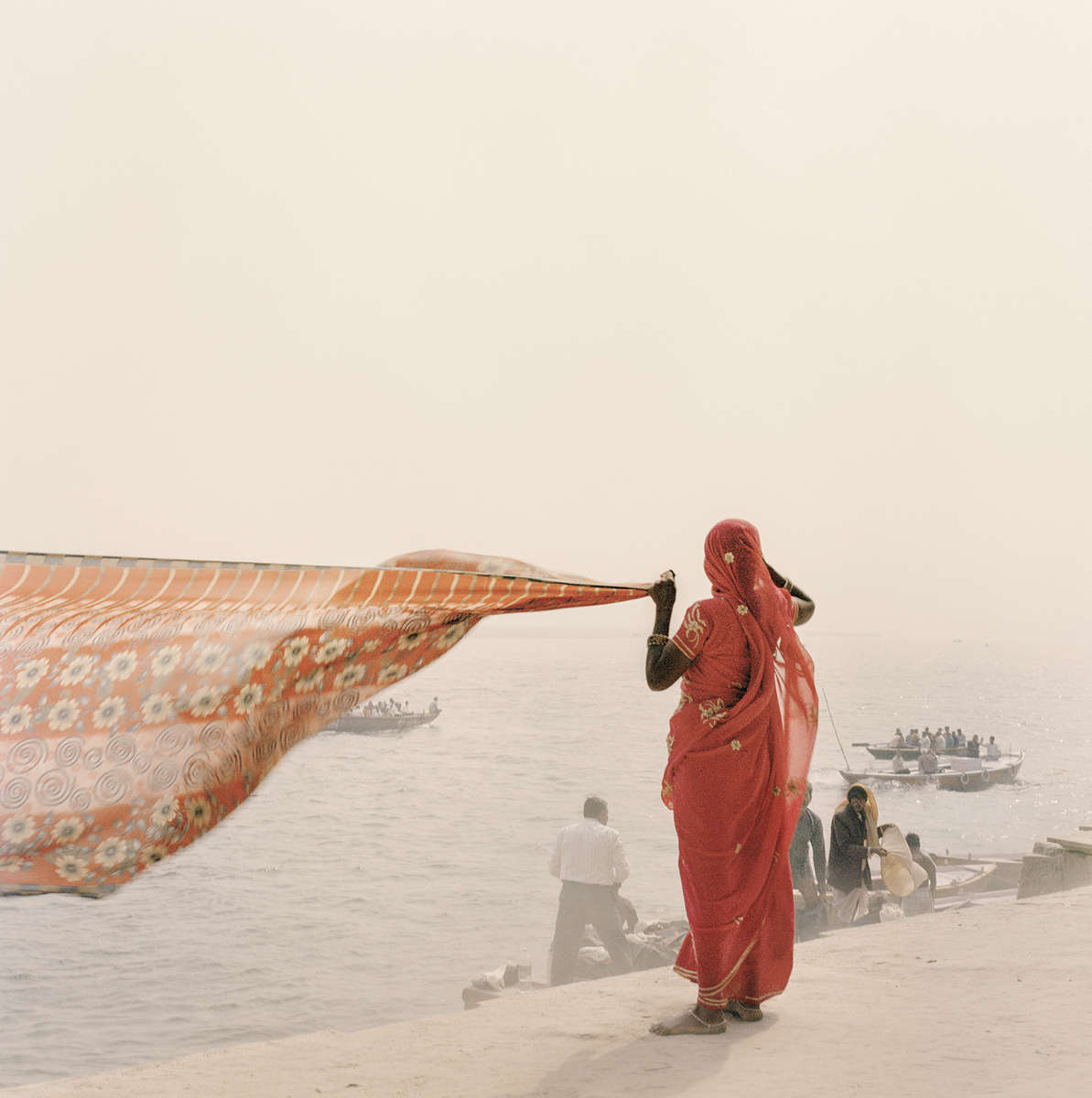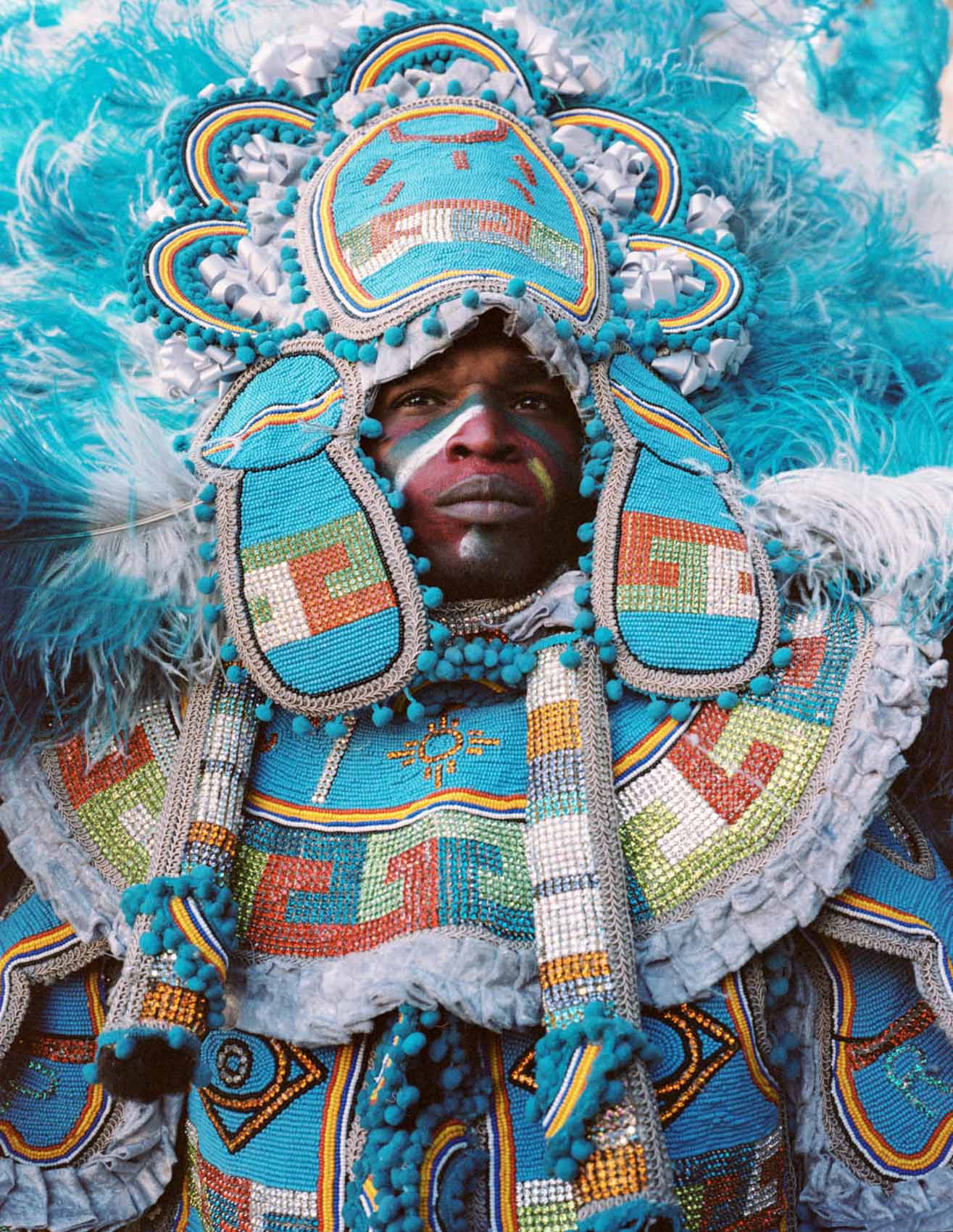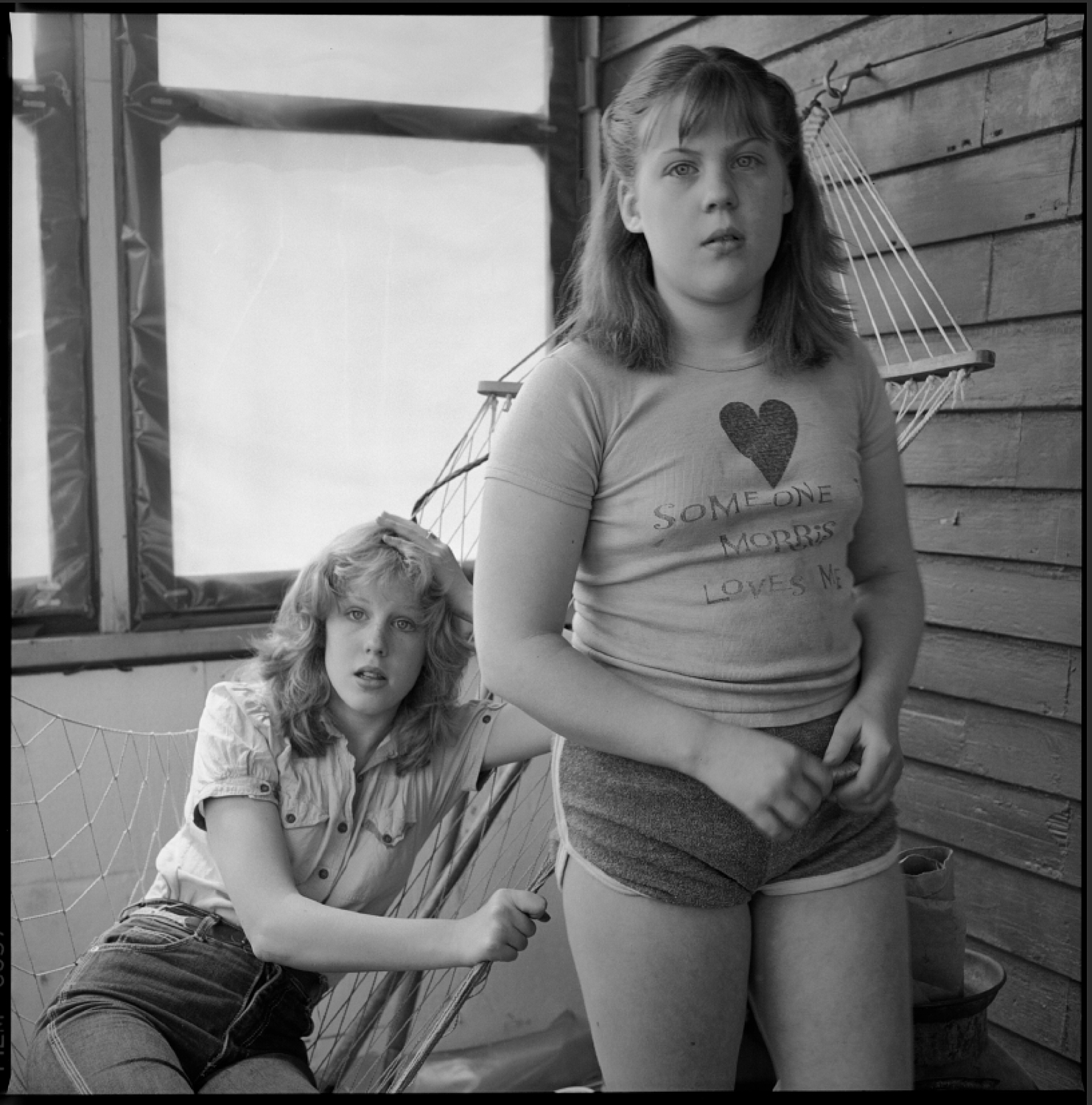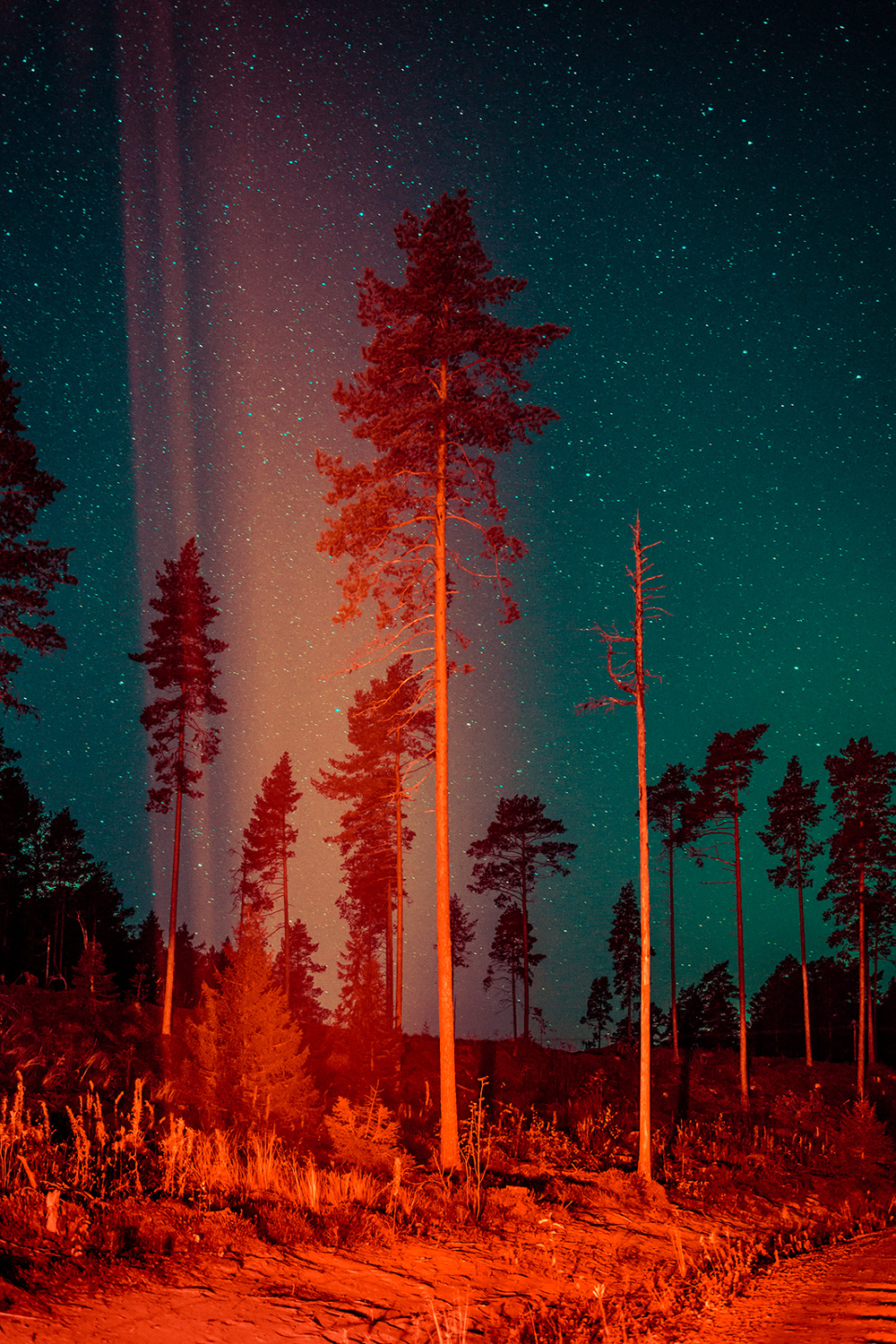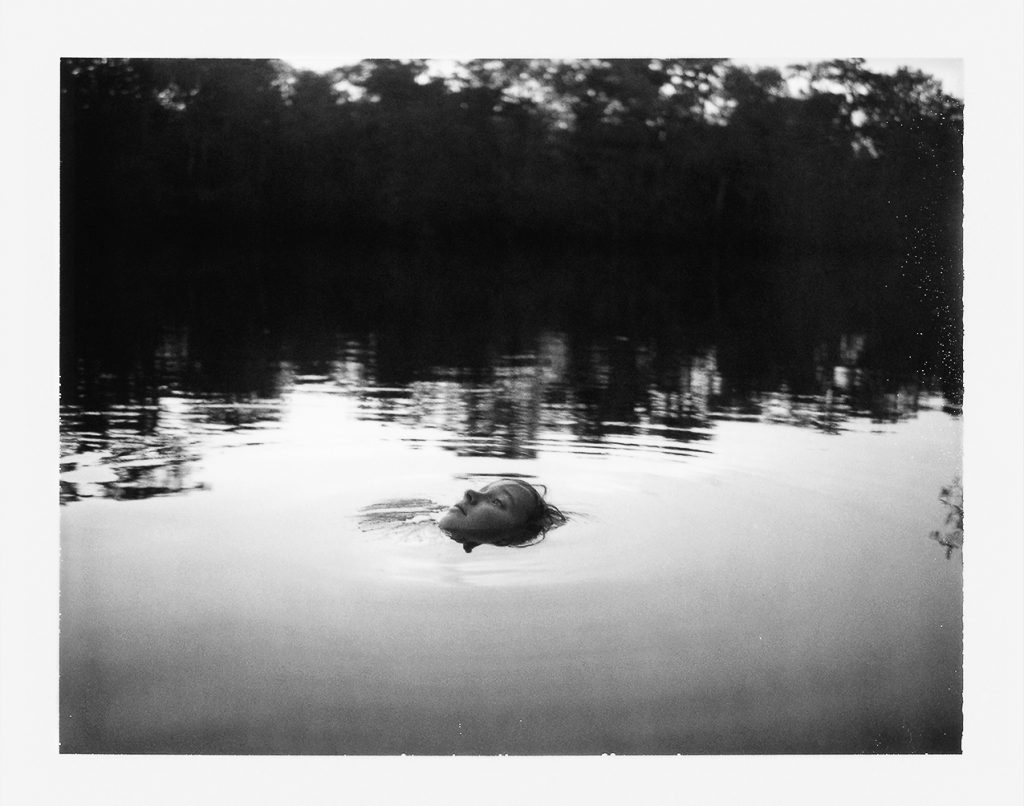
Tell us about your long-term project, « The Arc »?
The Arc is a collection of polaroids and experimental films I created over a period of six years, 2012-2018. Bridged together, they explore a place by ritualizing the waxing and waning of summer and the wild desire to remain in its embrace. The work centers on everything fleeting: beauty, time and memory. The original title of my project, The Arc of Summer, revealed itself over time. The concept is rooted in the idea of building a visual narrative ––“story arc”–– of our summer adventures at the cabin. As I reflected on the word “arc”, I became equally fascinated with the depth of its meaning, and its references to sacred stories such as Joan of Arc and Noah’s Ark. I later shortened the title to “The Arc” to punctuate the play on words between, “arc” and “Ark” as a way to reference both the work’s progression and place of origin.
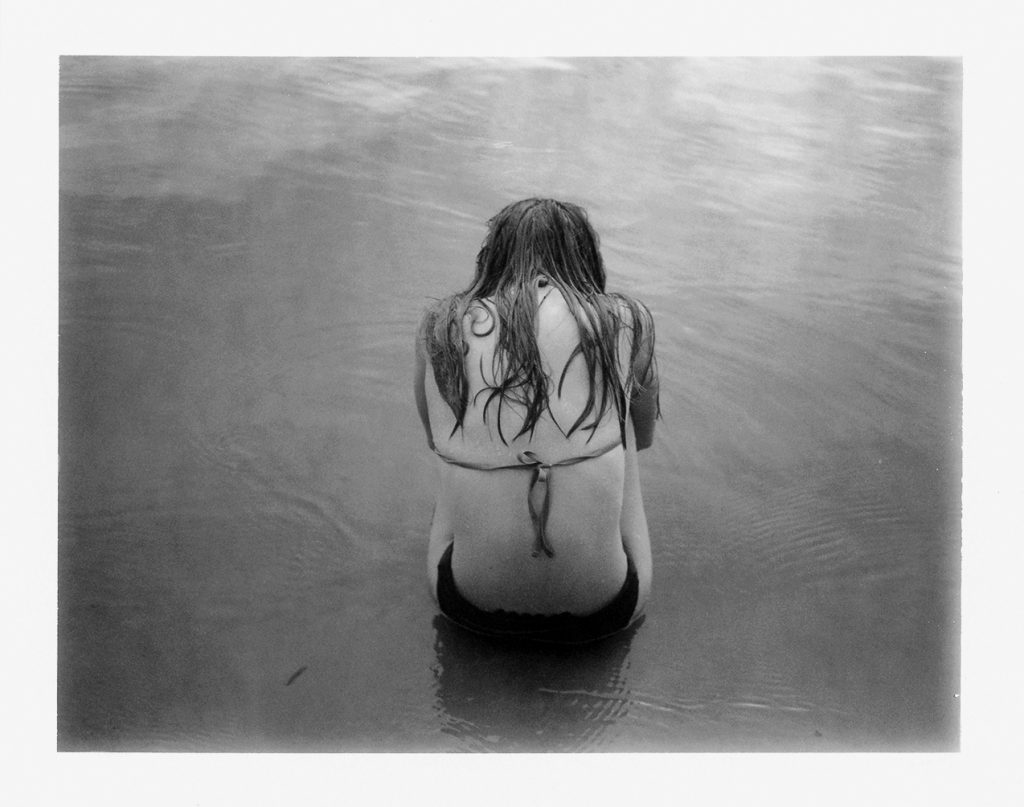

How did your project begin and what inspired its momentum?
The project was born out of time spent with my family at our historic cabin, Ark Lodge, set deep in the woods of South Carolina. Ark Lodge was built in 1940 on land that has been in my husband’s family for almost a century. It rests in a secluded landscape that has somehow managed to escape modernization for centuries. Ark Lodge remains an atmospheric place where time feels elastic––slow-moving.
The Arc was inspired by a fragmented collection of family photos left at the cabin over several generations. The stories behind many of the photos remain untold; they provoked a great curiosity within me to question/reflect on what it means to belong to a land.

What camera/film did you use? With instant cameras, how does the film process? Do you instantly see your photo do you work on it right away or just put in the box?
I used a variety of vintage Land cameras for this project, mostly the Land 250, with a combination of expired Polaroid and Fuji pack films. The film and the camera combined become a rudimentary traveling darkroom. After capture, you pull the film out of the back of the camera. Development time varies depending on the temperature. Then you peel the film apart to unveil a small print. I spent a lot of time traveling on water (kayaks, canoes), walking in the woods and chasing after three spirited children. Working with a Land camera provided me the freedom I needed to move with life’s challenges —to work thoughtfully and quickly.
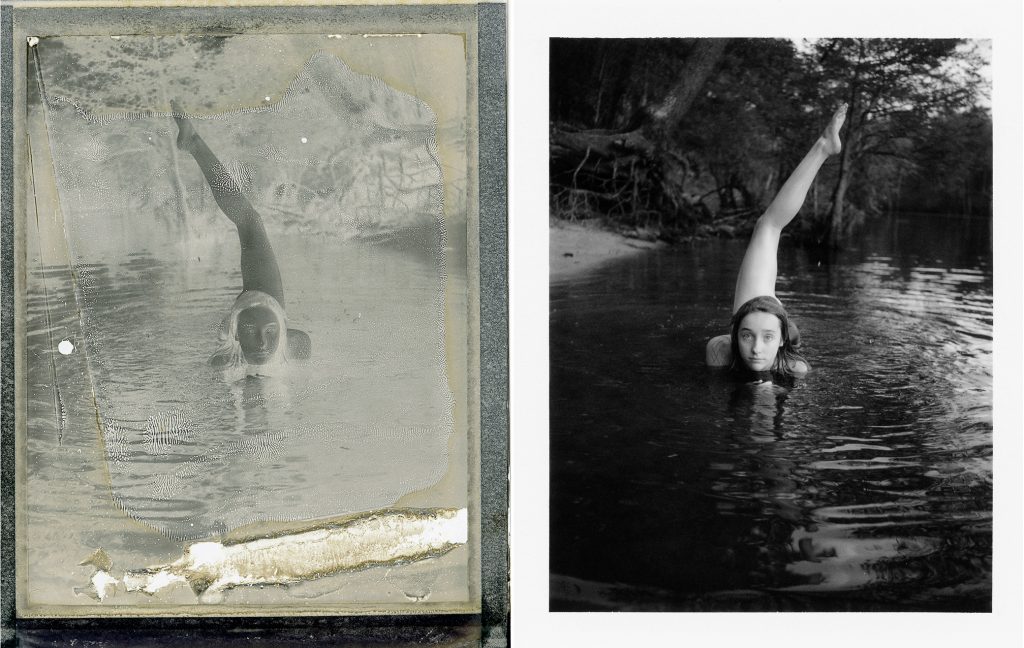
Can you share with us a little about the project’s development?
The project’s meaning developed over time. It began with a desire to document moments and expanded into the challenge of capturing something less personal, more universal. Ark Lodge is a place I’ve returned to over and over again for many years. The project evolved in response to countless discoveries of how the light changed through the seasons. Time was central to my creative process, but I wasn’t living by time, but rather in consideration of the land, my family and my inner state of being.
With every visit, I became more struck with how hauntingly beautiful the land was. How small our place was in its vastness. These observations shifted my intentions. The work led me to explore the mystical aspects of the land and the dark, uncomfortable places within myself. The process was, in many ways, an uncovering of a relationship with uncertainty. Photography became my way to reconcile with impermanence.
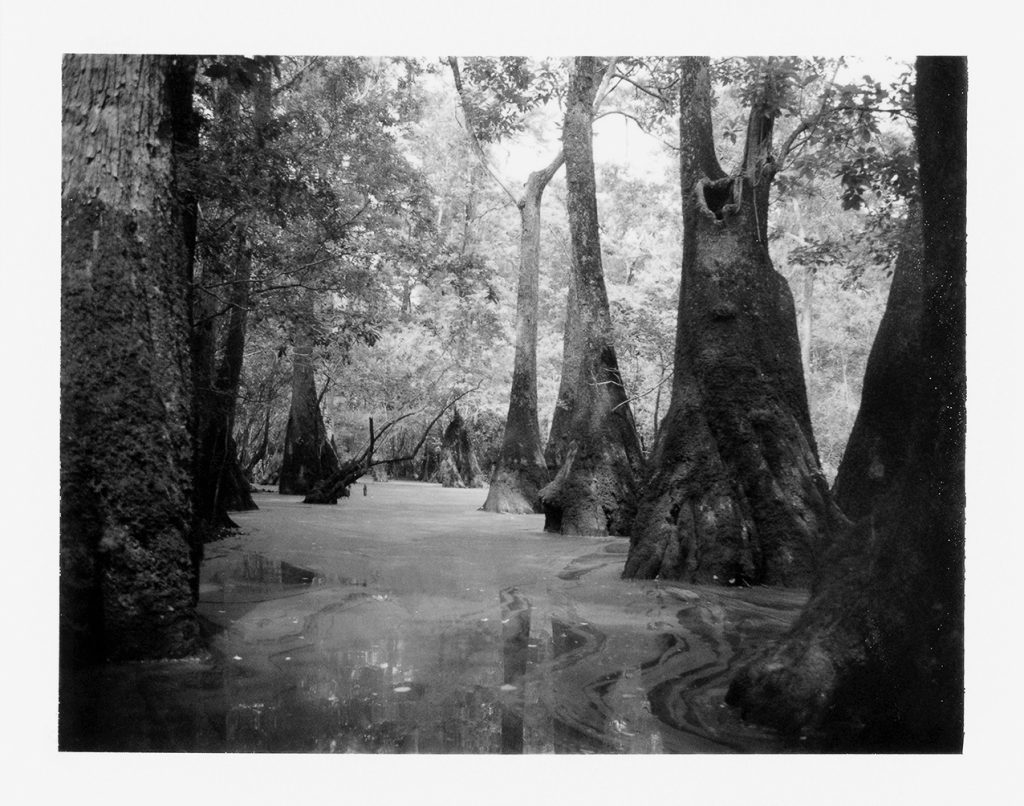
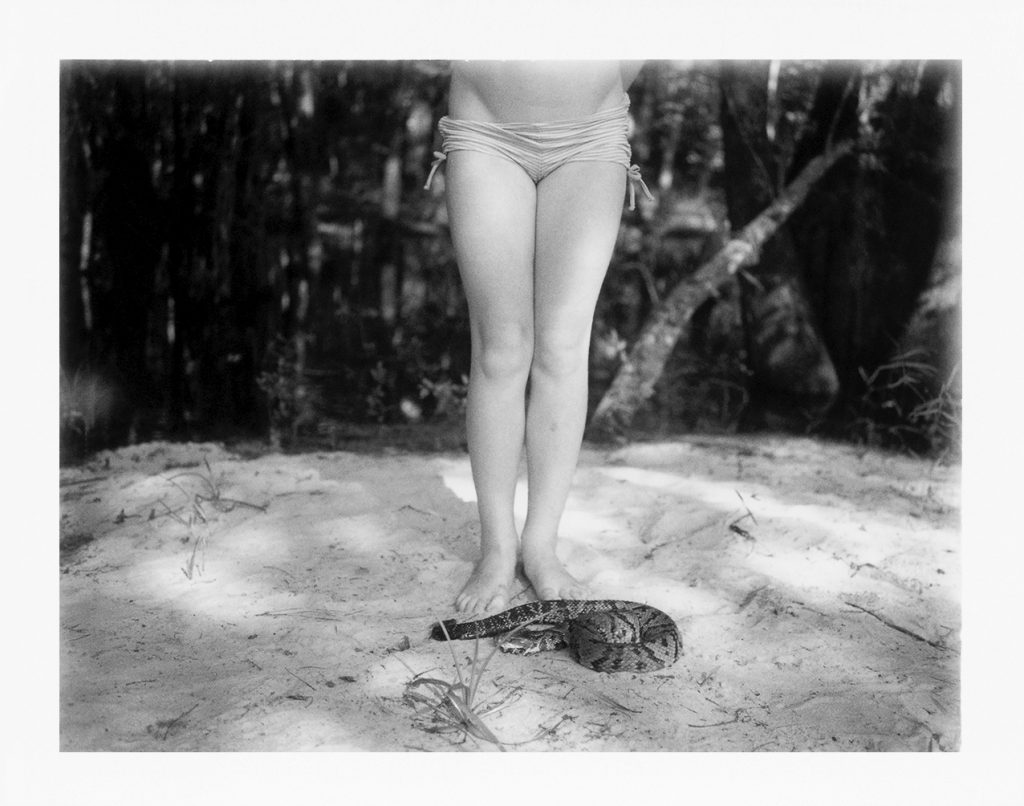
What was your intention with this work? Was it a natural desire to do this work? Did you feel importance or sense of grasping energy, to an era, to poetry?
I’ve always been interested in how perception is shaped by memory and time. When you hold a polaroid in your hand, it becomes your world for a moment. Polaroid has a natural ability to evoke chance encounters with imperfection––it has a remarkable way of translating light with great tones and selective details, especially with a black and white film. As objects, polaroid prints are relatable to the human condition. Like memory, they’re vulnerable and transform over time.
For all of these reasons, poetry and polaroid became synonymous. Through the lens, I was attempting to find metaphors, a means to express my gratitude for the world. During the project I did experience a feeling of importance with the decision to select polaroid as a medium; there was a gentle grasping towards the past to weave it with the present as a way to celebrate life. Polaroid fulfilled a natural desire to create images that both described with the senses and provoked thought in a humble, sincere way.

Tell me more about your relationship with nature the elements and why they’re important for you?
I believe I’m at my best when I’m immersed in nature. It is where inspiration finds me. When I’m not outdoors, I have a tendency to overthink – get trapped in thought or caught up in busyness. Neither thoughts nor busyness is ever satisfied for long; what they generate never lasts longer than the ring you draw in water. Everything is always transforming. Alchemy has always interested me for that reason. It’s about the creation and transformation of the elements: air, earth, water, fire. When I began my artistic career, I was a painter. I suppose I first became interested in ancient alchemy during my painting studies while learning to make egg tempera paints, grinding my own dry pigments and then binding it with egg yolk. There’s something really alluring about using the earth’s natural elements to create.
Early in my creative process with this series, I noticed an oscillation in the imagery between the familiar (documentary style) and a strange otherworldliness (abstraction). I chose to use two alchemy symbols of the elements on the cover of my book, “air” and “earth”. It was a way to symbolically represent The Arc’s movement between these two worlds: reality and dream. “Air”, an upward facing triangle with a horizontal bar, is associated with warmth, wetness and the intangible. “Earth” is the opposite of Air, a downward-facing triangle with a horizontal bar, associated with dryness and cold, and the physical world.
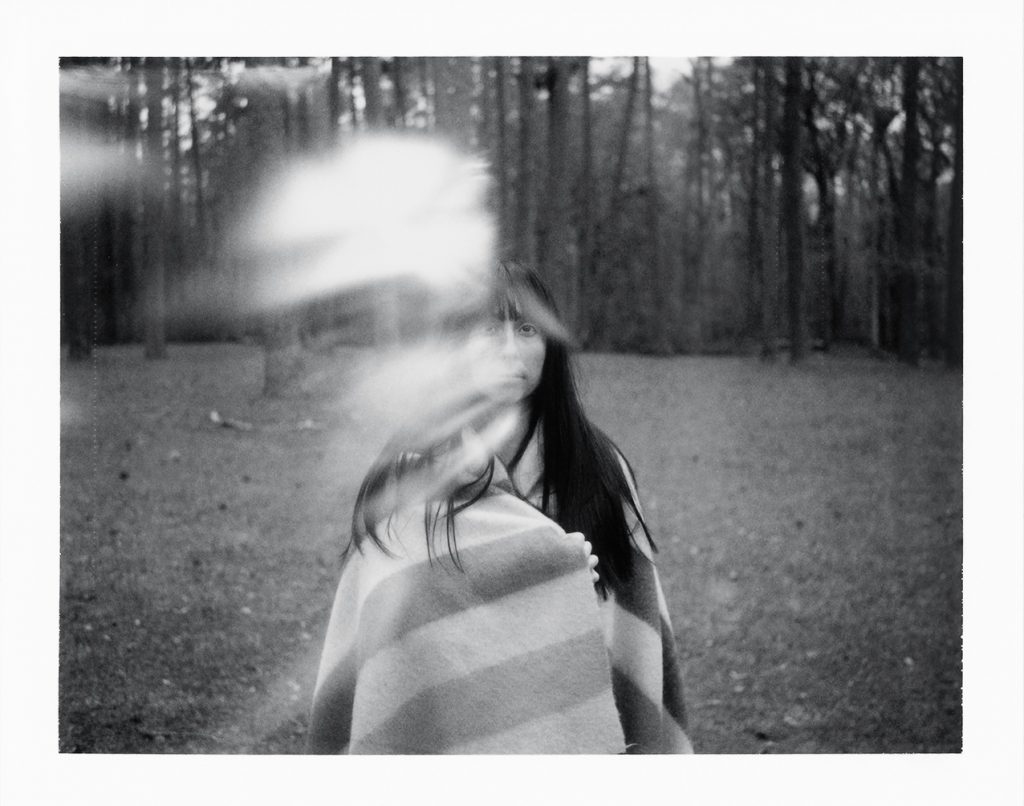
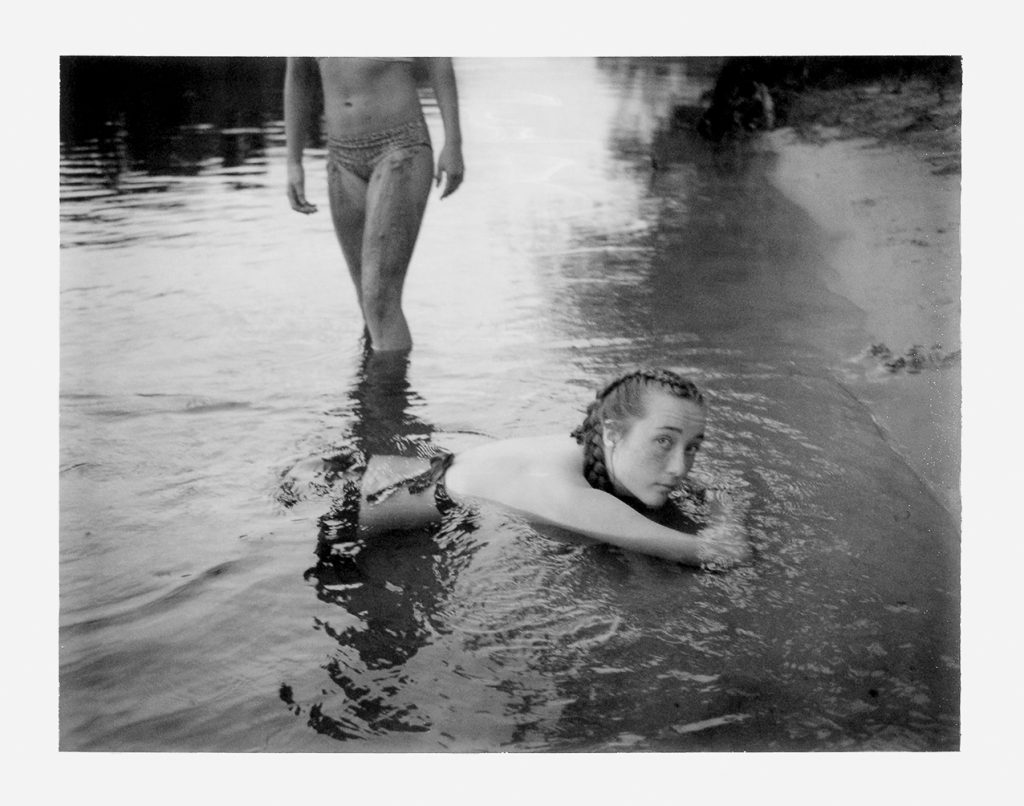
Do you have a favorite photo/moment in your series?
In May of 2012, just a few weeks into the project, I created an image with my daughter called “The River’s Arch” that sparked an epiphany for the project’s conception. It’s a photograph that spotlights a dark silhouette of my daughter’s body being raised high above the black river; her arched back gracefully outlined by an arc of light against a tree line of ancient cypress. Immediately after capture, it became a visual reference of illumination—one that described both the tangible and intangible qualities I was seeking. It also marked a pivotal moment of a project; when collaboration met chance under the most unlikely of circumstances.
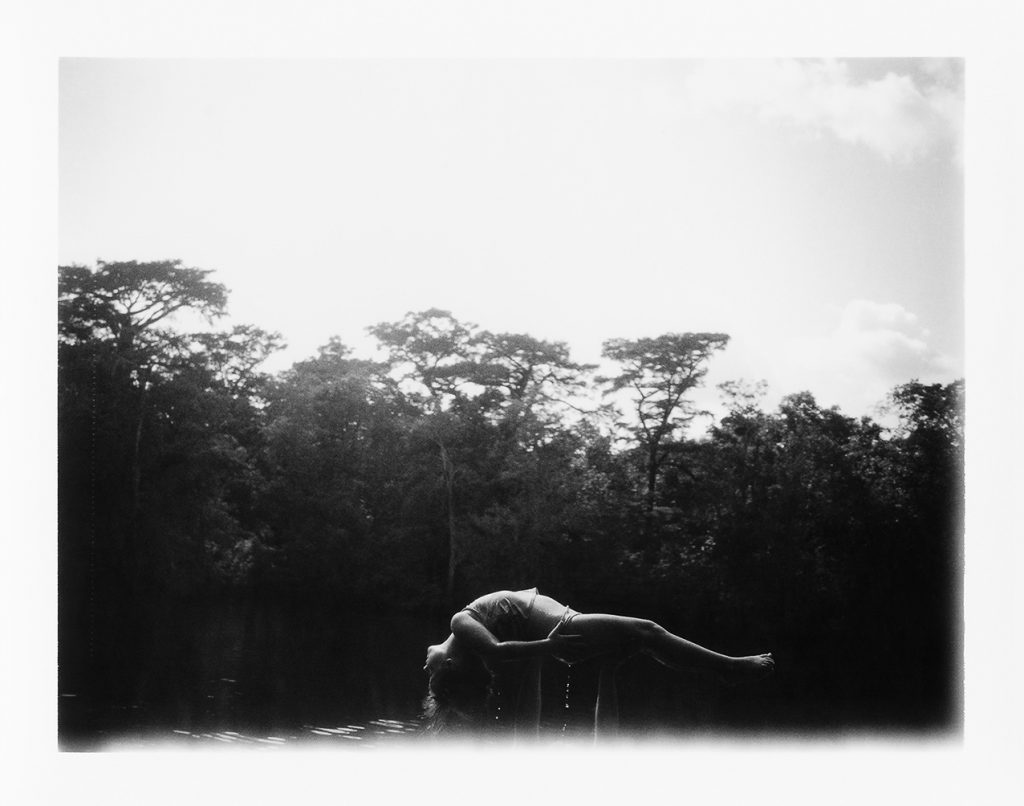
Who/what influences your photography?
My influences extend beyond photography. I began my artistic career studying painting; I was introduced to darkroom photography in college, but my photography practice deepened after the birth of my children. I draw inspiration from those experiences as well as poetry, music and eastern philosophy. Photographers who helped shaped my vision are Robert Frank, Emmet Gowin, Jungjin Lee, Rinko Kawauchi and Mark Cohen. I have a penchant for iconic, documentary photography of 70s rock musicians such as The Rolling Stones and Bob Dylan. Portraits of that generation never ceased to inspire.
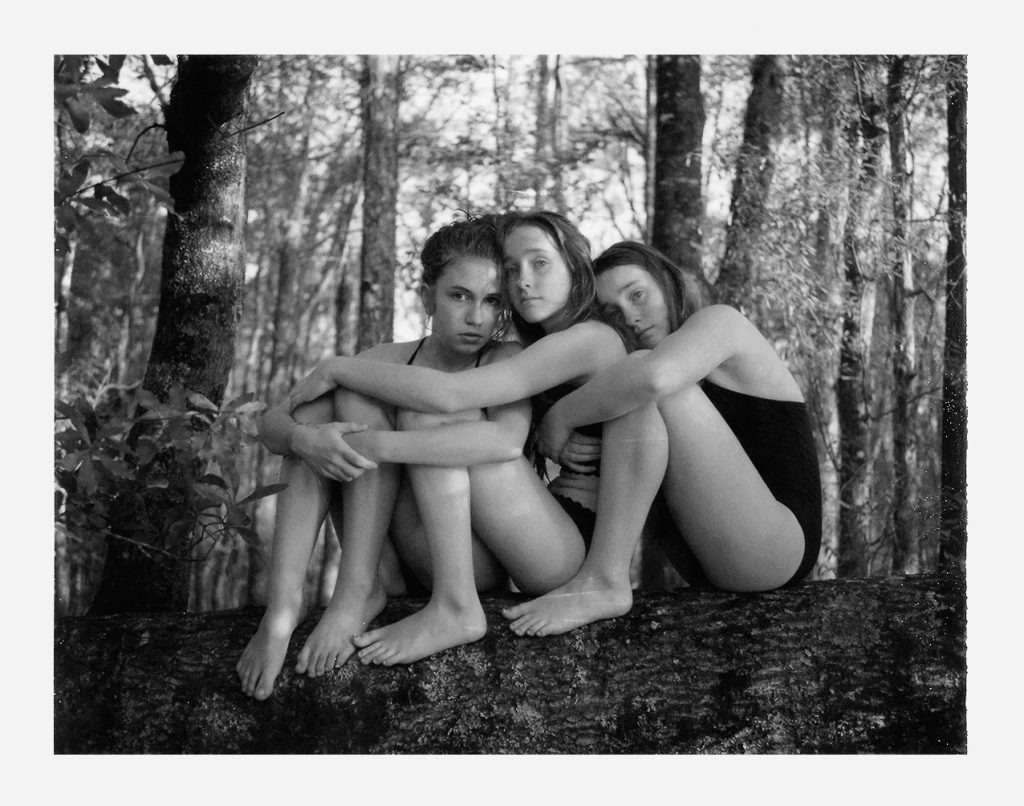

Let’s talk about your short videos. I like them very much. What led you to create them? Plans to make more?
Thank you. I’ve always been interested in “movement”; for as long as I can remember my art practice has involved the repetition of single images. When the imagery was complete, I saw I had created a series of sequences that suggested the experience of moving.
The Arc series brought my passion for filmmaking to the forefront of my practice. Once I began to experiment with filmmaking, I discovered I was able to say a little more. Yes, I have a few more experimental films in progress that will be added to The Arc series. After that, I plan to continue making films. I’d love to work with a Super 8.
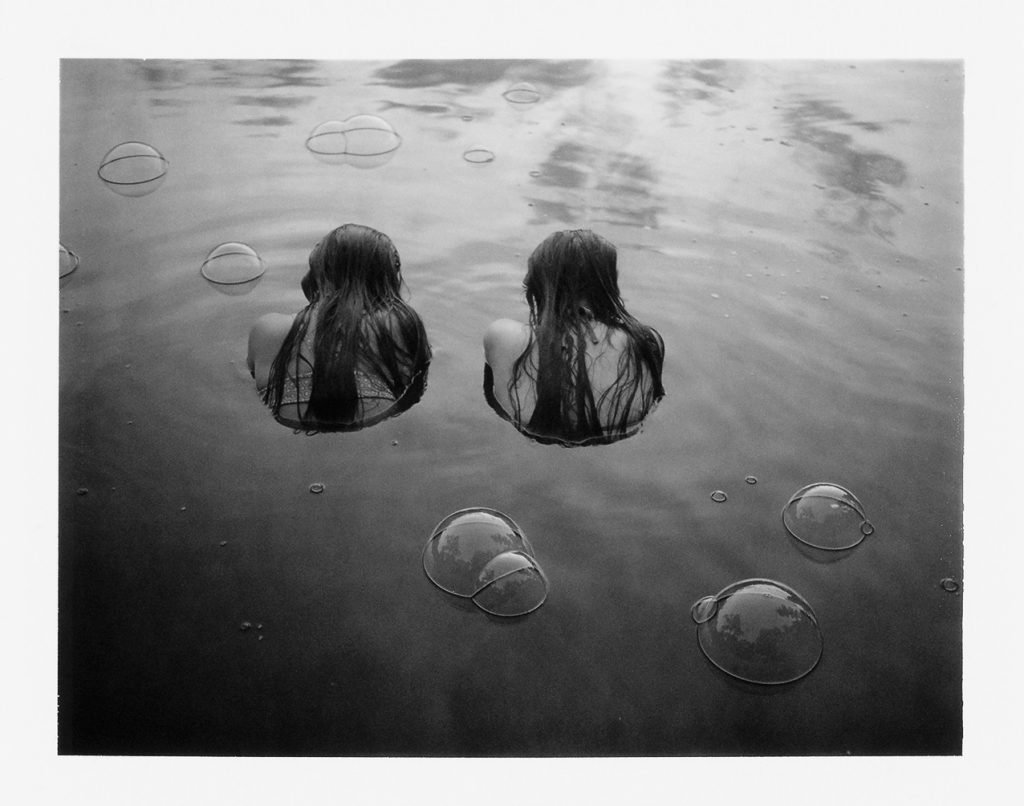
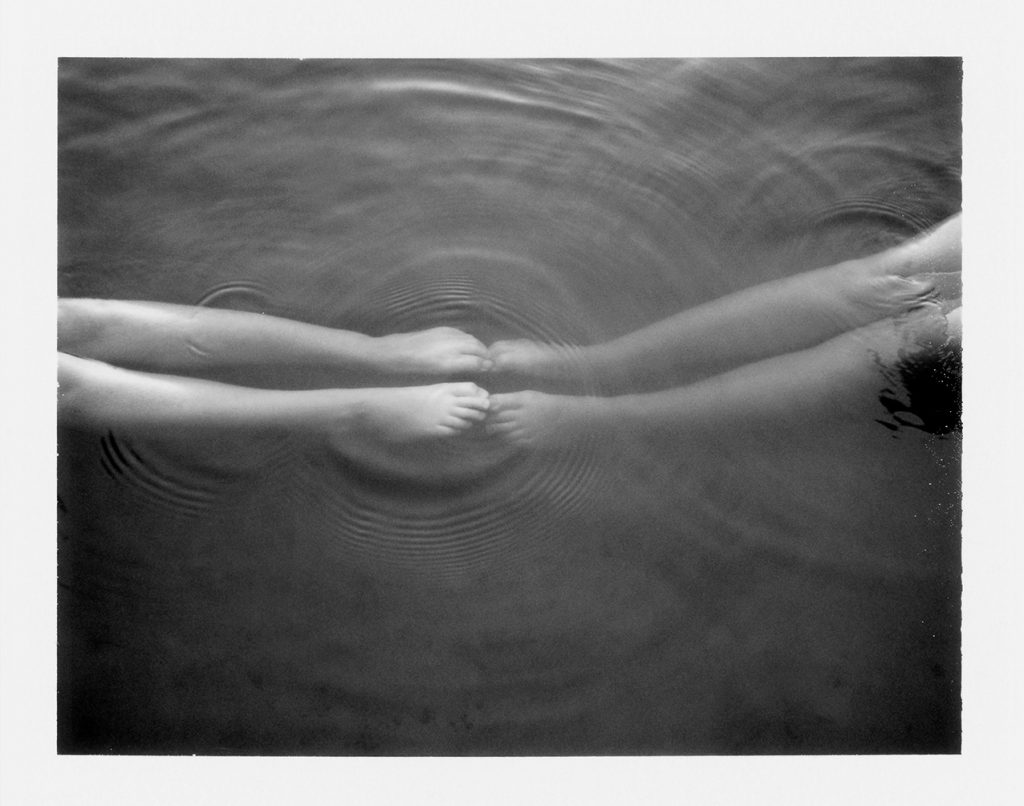
Name 5 of your favorite photobooks, ones you think we must see.
Opening by Junglin Lee
Sequester by Awoiska Van Der Molen
Elf Dahlia by Maja Daniels
Half Story/Half-Life by Raymond Meeks
Emmet Gowin (self-titled monograph)
Interview by Kalel Koven
Photographer’s Links: Website / Instagram / Videos
Book « The Arc » by Jen Ervin published by Aint’bad

